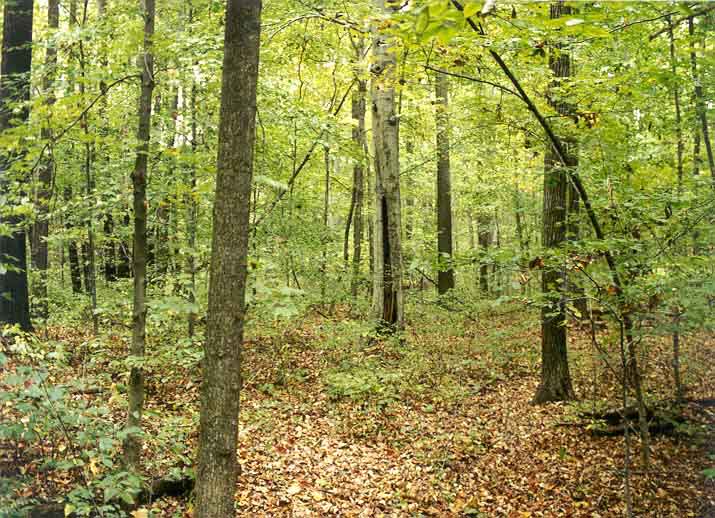
Summer 1999 Volume 8, Number 3
Classified Forest Health: AN UPDATE
by Don Stump, District Forester
The Classified Forest Annual Report submitted by owners in 1998 posed the question, "Would you be interested in having a Forest Health Monitoring Plot established on you Classified Forest?" As most of you know a survey question usually brings a response that hovers around 10%. We were overwhelmed with over a 25% favorable response!
To give you some insight as to why the question was placed on the annual report, we
need to first look at the National Forest Health Monitoring Survey. The arrangements of
the national plots was based on a grid system placed across the country. Wherever the plot
center fell on the map was the location of the plot to be surveyed. A total of 144 plots
fell within Indiana. Of these 38 plots contain a forested condition and only 22 are
considered to be fully forested. This amounts to one plot representing approximately
200,000 acres of forest land in Indiana. This may be suitable when our data is
incorporated with the other states to report on the forest health of the Central Hardwoods
Region, but does not really tell us that much about the health of the forests in Indiana.
In participating with the national survey, I have found many of our plots are not being
actively managed, along with being subjected to grazing.
Our goal is to place a forest health plot on everyone's classified forest that wants one. This will take some time. The first phase is to have 184 plots installed over the next 3 years. This will represent two plots per county. The selection process was totally random to prevent bias.
Darrell Breedlove, Dan Johnson, Phil Marshall, and myself are certified to survey the national forest health plots. This past spring we trained the District Foresters to establish the plots. This included laying out the plot design, and taking tree diameters, distances to sub-plot centers and azimuths for each tree. Many of the 18,4 plots have been established. The "meat" of the forest health plot includes crown conditions and tree damage. These measurements can only be taken when the trees are in full leaf. Training for these measurements was done last July. Crown measurements include live crown ratio, crown density, transparency, and dieback. The tree is observed from roots to crown for damage that can include seams, cracks, obvious signs of decay, dead or broken branches, etc.
Once the plots are established and measured, they will be remeasured every five years at the time of reinspection. Along with the reinspection report the landowner will receive a status report on his/her forest health. A composite or state of our classified forest health will be included in the Annual Classified Forest Newsletter. With an additional 184 plots we will reduce the ratio to one plot per 20,000 acres.
There are other plans in the works that will include the Forest Keepers program. This will be designed for any landowner to do his/her own forest health monitoring. It will also be useful for home-owners and urban forestry.
If you think back to trips to your woods, how many times do you go back to an individual tree and reflect upon what it looked like the last time you were there? If someone says we are losing our forests due to different environmental problems, can you say "I have been monitoring the health of my woods and can tell you first-hand . . ."